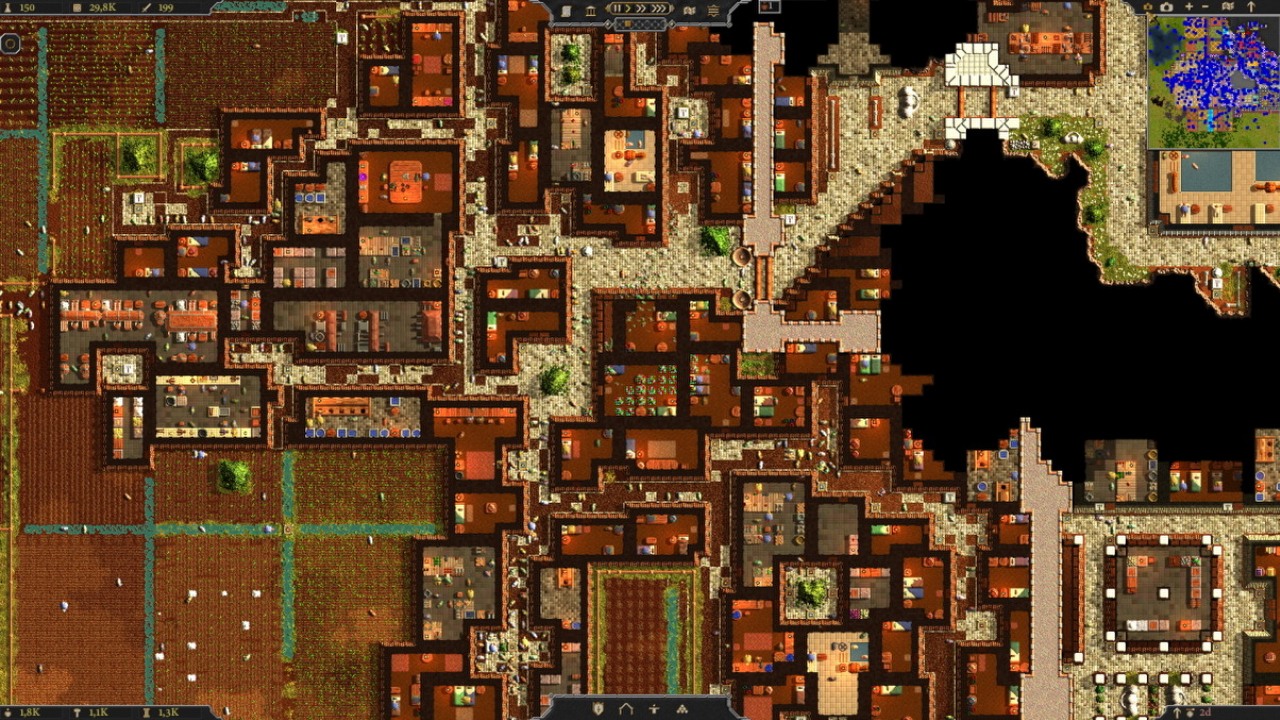Water Pump Not Working in Songs of Syx - Irrigation Canal System Explained
Confused about the Irrigation System and water pumps in Songs of Syx? Check our guide, where we explain how to raise water pressure.

Songs of Syx is a fantasy city-builder where you rise from a tiny colony to a grand empire. Unlike many games from this genre, the title focuses on realism and complexity. Simple things like water flow and social dynamics become important considerations as your city grows. This guide will help you understand the irrigation system and how water pumps work.
How water pumps work in Songs of Syx
In Songs of Syx, water pumps don’t directly move water around. Instead, they function by increasing the overall water pressure in a connected canal network. Here’s a breakdown of how they work:
- Each water pump adds a specific amount of pressure to the network, not a flow rate. This pressure is influenced by the surrounding groundwater level, with higher levels near rivers providing a maximum boost.
- The pressure from all the pumps in your network stacks up, determining the total number of tiles the canals can fill with water.
- The water pressure weakens as it travels through canals. So, you might need multiple pumps spread out to ensure sufficient coverage for distant farms or bathhouses.
- A water pump needs workers to function. Ensure you have enough citizens assigned to keep the pumps operational.
How to raise pressure in water pumps in Songs of Syx
Water pumps have a max of 64 tile range to which they can pump water. For optimal efficiency, it’s best to place a water pump directly on a 100% water source. If placed on a less abundant water reservoir, such as one at 31%, the pump will only generate 20 tiles of pressure.
To ensure sufficient water coverage, you might need to:
- Prioritize placing pumps near rivers or other high groundwater sources. While not directly increasing pressure, optimizing your canal network can help.
- Avoid unnecessary twists and turns that might reduce overall pressure as water travels through the canals.
- Use multiple pumps spread out to ensure sufficient pressure reaches all connected areas.
- Plan your canals to reach farms and other water-dependent buildings directly, minimizing pressure loss over long distances.
- „The rebirth of historical Total War” Total War: Medieval 3 announced
- Apocalypse begins in Total War: Warhammer 3. Lords of the End Times „is not another update, it's the end of the world”
- Total War: Warhammer 40K or Total War: Star Wars? The Game Awards 2025 will reveal the last unknown about the future of the iconic strategy series
0

Author: Olga Racinowska
Been with gamepressure.com since 2019, mostly writing game guides but you can also find me geeking out about LEGO (huge collection, btw). Love RPGs and classic RTSs, also adore quirky indie games. Even with a ton of games, sometimes I just gotta fire up Harvest Moon, Stardew Valley, KOTOR, or Baldur's Gate 2 (Shadows of Amn, the OG, not that Throne of Bhaal stuff). When I'm not gaming, I'm probably painting miniatures or admiring my collection of retro consoles.
Latest News
- End of remote work and 60 hours a week. Demo of Naughty Dog's new game was born amid a crunch atmosphere
- She's the new Lara Croft, but she still lives in fear. Trauma after Perfect Dark changed the actress' approach to the industry
- „A lot has become lost in translation.” Swen Vincke suggests that the scandal surrounding Divinity is a big misunderstanding
- Stuck in development limbo for years, ARK 2 is now planned for 2028
- Few people know about it, but it's an RPG mixing Dark Souls and NieR that has received excellent reviews on Steam, and its first DLC will be released soon


